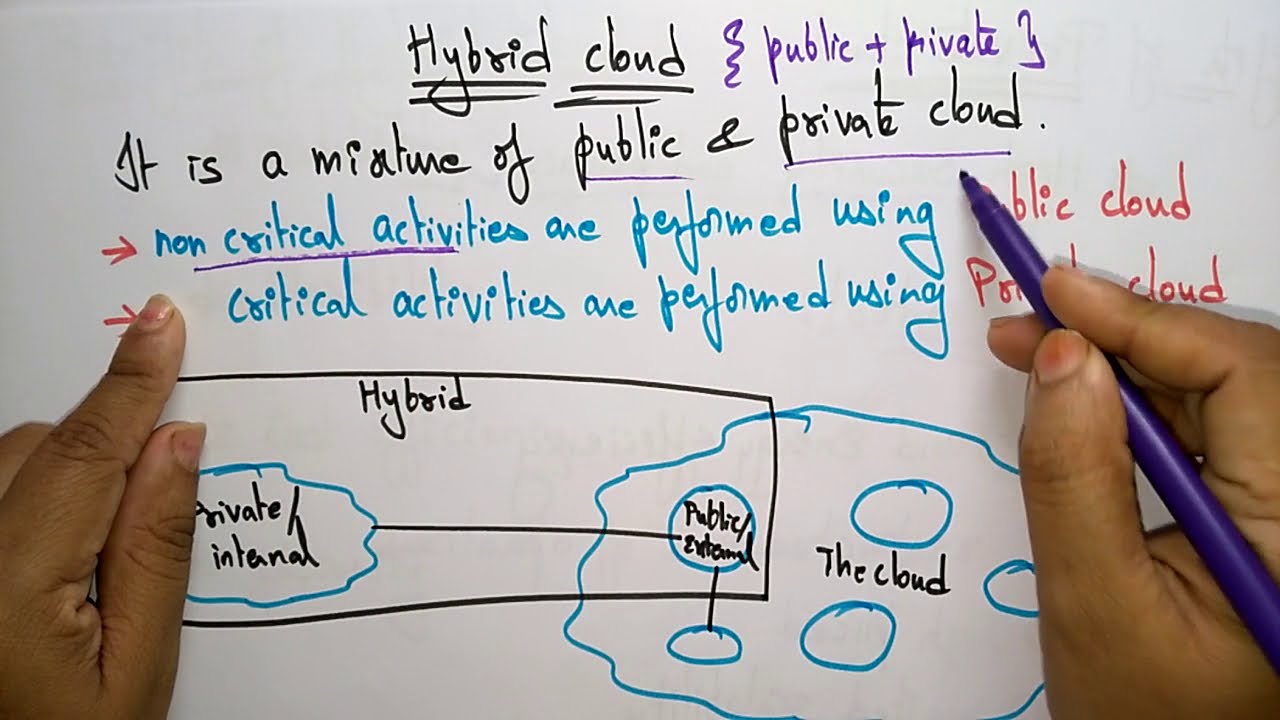
In today’s digital age, cloud computing has become a crucial technology for businesses of all sizes. It enables organizations to streamline their operations, reduce overhead costs, and scale their infrastructure rapidly. However, choosing between public and private clouds can be a daunting task. Each model has its benefits and drawbacks, and neither is perfect for all scenarios. This is where the hybrid model cloud computing comes into play – it combines the best of both worlds to provide organizations with the flexibility they need to meet their requirements.

The hybrid model cloud computing is a type of cloud computing that combines the features of both public and private clouds. It allows organizations to keep their sensitive data on-premises while leveraging the scalability and cost-effectiveness of public clouds for less-critical workloads. The hybrid cloud ecosystem consists of two or more interconnected clouds that operate independently but share data and applications seamlessly. This architecture enables organizations to maintain control over their data while enjoying the agility and scalability provided by public clouds.


Netflix is one of the world’s largest video streaming platforms, serving millions of customers worldwide. The company uses a hybrid cloud model to deliver its services efficiently. Netflix primarily utilizes public clouds to store and stream its content. However, it also uses on-premises infrastructure to manage its user data and payment information. This combination of public and private clouds allows Netflix to provide high-quality services while maintaining control over sensitive user data.
IBM has been pushing laborious on being a aggressive menace in enterprise cloud, however is much behind the leaders like Amazon AWS, Microsoft Azure and Google Cloud. It’s newest technique to turn out to be extra related, along with shopping for RedHat for its cloud experience, is to develop a sequence of “straightforward on-ramp” Cloud Paks that it claims can considerably scale back the period of time needed for enterprises to be cloud-enabled. However is that this sufficient to alter the potential of IBM to compete in a extremely aggressive fashionable cloud surroundings?
Ticketmaster, an American ticket sales and distribution company, uses a hybrid cloud architecture to meet the demands of its customers. The company operates in multiple countries and needs to maintain a high degree of availability to ensure customer satisfaction. To achieve this, Ticketmaster uses public clouds to handle traffic spikes during peak periods, while keeping sensitive financial data in a private cloud. This approach has allowed Ticketmaster to scale rapidly while meeting regulatory compliance requirements.

When comparing hybrid cloud computing with public and private clouds, the following differences emerge:
If you’re considering implementing a hybrid cloud architecture, here are some tips to keep in mind:
The hybrid cloud model provides organizations with the flexibility they need to allocate resources as needed, while keeping critical data secure on-premises. It also enables better control over data, scalability, and high availability.
Yes, organizations can integrate multiple public clouds in a hybrid cloud environment to achieve better scalability and cost-effectiveness.
Yes, by keeping sensitive data on-premises, organizations can maintain regulatory compliance requirements while still leveraging the benefits of public clouds.
Hybrid cloud models do come with some downsides. The architecture can be complex and difficult to manage, which may require specialized expertise. Additionally, maintaining data consistency across multiple clouds can be challenging, and there may be performance issues due to latency or connectivity problems.
The choice between public, private, or hybrid cloud models depends on your organization’s specific needs and requirements. Public clouds are generally more cost-effective but offer less control over data, while private clouds provide better security but can be more expensive to set up. A hybrid cloud model combines the best of both worlds and is suitable for organizations that need to balance cost-effectiveness and data security.
Hybrid model cloud computing is an excellent solution for organizations looking to take advantage of the benefits of public clouds while keeping their critical data secure on-premises. It provides the flexibility to scale infrastructure up or down as needed, while maintaining control over sensitive data. The case studies presented in this article highlight how companies like Netflix and Ticketmaster have successfully implemented hybrid cloud architectures to meet their specific requirements. By following the advice provided in this article and carefully evaluating the pros and cons of each cloud model, organizations can make informed decisions about their cloud infrastructure and stay ahead of the competition.